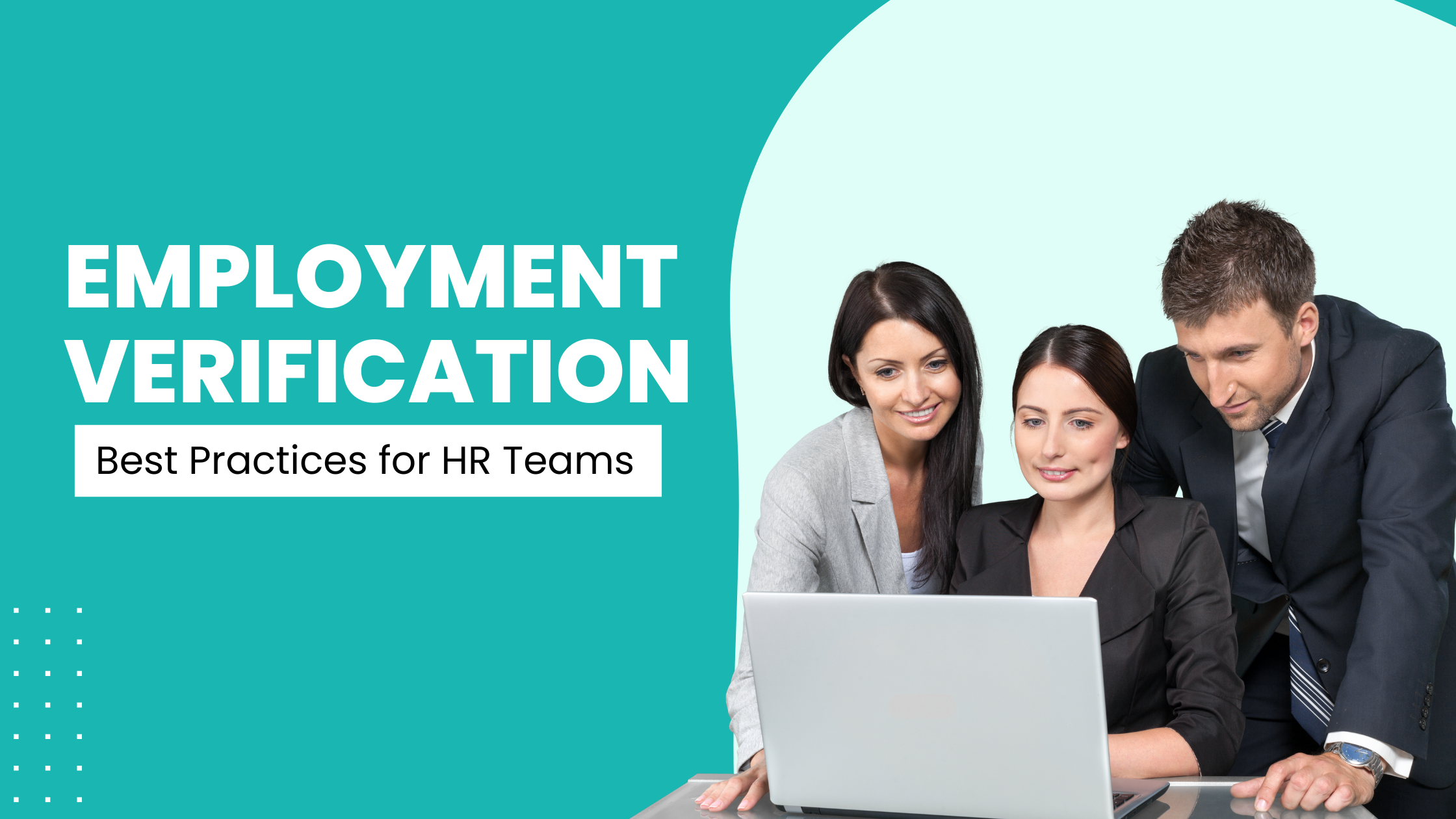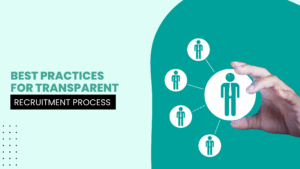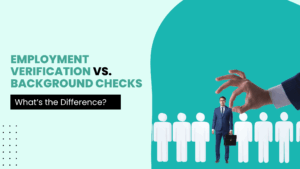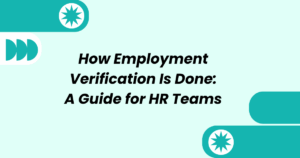Employment verification best practices are no longer just administrative steps, they’re critical safeguards for modern hiring. In 2025, with remote hiring and compliance risks on the rise, HR teams must adopt a rigorous, structured approach.
Relying on outdated or manual processes can expose your organization to risks such as negligent hiring claims, regulatory penalties, and damaged employer reputation. Today, the best HR teams follow structured verification procedures that are transparent, automated, and scalable across geographies.
This guide outlines the most effective employment verification best practices in 2025. You’ll learn what’s changed, which steps to standardize, and how to avoid costly mistakes.
Table of Contents
Employment Verification Best Practices HR Teams Should Follow in 2025
A high-quality employment verification process in 2025 must strike a balance between accuracy, efficiency, and legal compliance. Below are industry-aligned best practices that modern HR teams are adopting to ensure a reliable and defensible hiring framework.
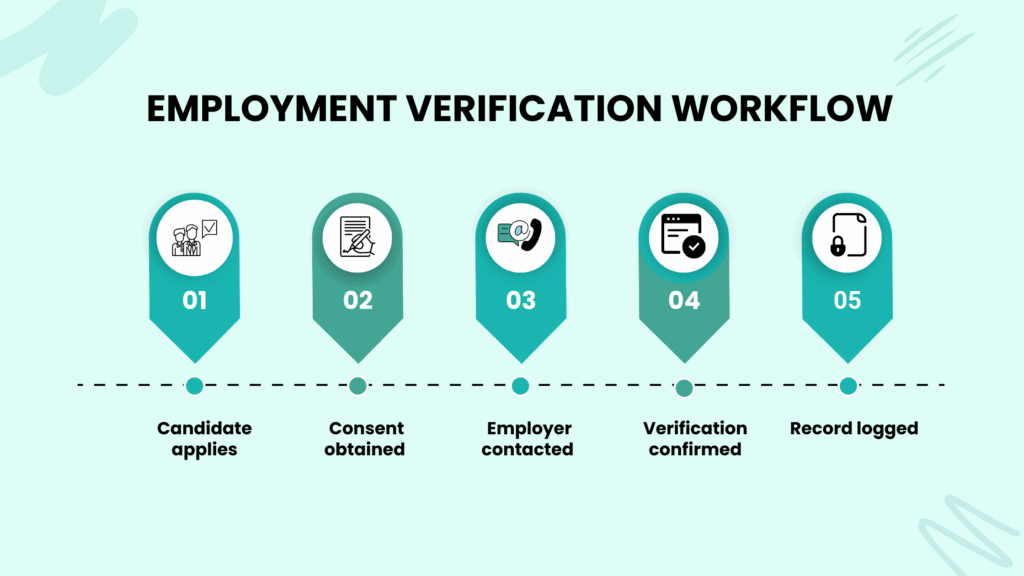
1. Establish a Formal Verification Policy
Documented verification procedures help ensure consistency across all roles, teams, and geographies. A formal policy should define:
- What types of employment information must be verified
- At what stage of hiring verification occurs
- Required documentation and recordkeeping standards
- Guidelines for domestic and international checks
Standardizing this process ensures fairness and minimizes the likelihood of error, delay, or legal missteps.
2. Use Verified, Third-Party Contact Channels
Avoid relying solely on contact details provided by the candidate. Where possible, verify employer contact information independently, through company websites, professional directories, or established HR communication lines.
When global verification is required, consider using reputable third-party services with localized expertise to reduce communication delays and avoid cultural or legal misunderstandings.
Solutions like WorkSure, or region-specific services help ensure accurate outreach.
3. Integrate Verification Tools Within Your ATS or HR Platform
To reduce manual follow-ups and streamline the process, leading HR teams are integrating digital employment verification tools into their existing applicant tracking systems (ATS).
These tools offer:
- Automated employer outreach
- Secure candidate consent capture
- Status tracking and alerts
- Data retention for audit readiness
By centralizing the process, organizations reduce human error and gain full visibility into verification timelines and outcomes.
Platforms like WorkSure, for example, are already integrated with HRMS systems such as Resourceinn, allowing HR teams to verify employment history smoothly. This reduces manual effort, improves compliance tracking, and ensures every verification is properly documented.
4. Prioritize Compliance in All Jurisdictions
With remote and cross-border hiring increasing, HR teams must adhere to employment laws and privacy regulations in multiple regions. What’s permissible in one country may be restricted in another.
Maintain a compliance checklist that reflects local consent requirements, data handling and permissible questions or limits on information requests.
Engage legal counsel or compliance officers when expanding hiring into new regions to ensure all verification practices meet regulatory expectations.
5. Communicate Clearly with Candidates
Transparency is a key element of good hiring. Let candidates know:
- What you’ll be verifying
- Why it’s important
- How their information will be used and protected.
Clear communication reduces candidate anxiety, prevents delays, and reinforces your brand as a respectful, process-driven employer.
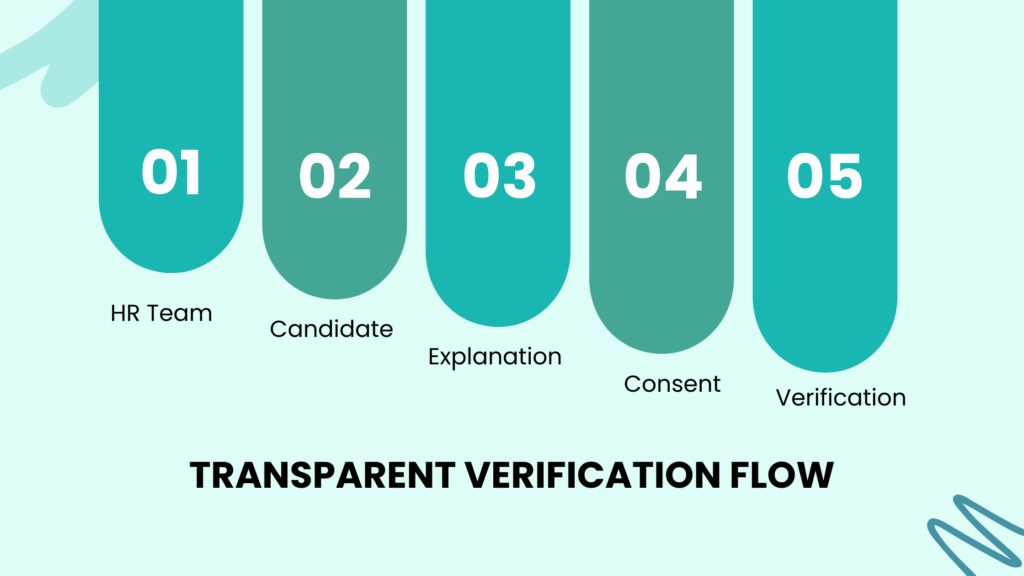
6. Implement Timelines and SLAs
A strong verification process includes defined service-level agreements (SLAs) for internal teams and vendors. Delays in verification can result in lost candidates, especially in competitive hiring environments.
Set realistic timelines (e.g., 48–72 hours per verification) and regularly measure performance to identify bottlenecks. Ensure that hiring managers and recruiters understand how verification timelines fit into the broader recruitment cycle.
7. Document Every Interaction and Outcome
Maintain a detailed log for each verification, including:
- Date and time of contact
- Contact person’s name and role
- Confirmation details (title, dates, responsibilities)
- Outcome of the check (confirmed, unclear, failed)
Store these records securely in compliance with your organization’s data policies. This practice strengthens your audit readiness and provides defensible records in the event of a dispute.
You can use encrypted ATS storage or cloud-based HR recordkeeping tools with role-based access controls to store verification logs securely
8. Regularly Audit and Update Your Verification Process
Hiring regulations evolve, and so do candidate behaviors and market risks. Conduct annual audits of your employment verification process to identify gaps, outdated practices, or compliance concerns.
Review vendor performance, documentation practices, candidate feedback and legal developments in key hiring markets. Use these insights to update policies, improve turnaround time, and train relevant staff.
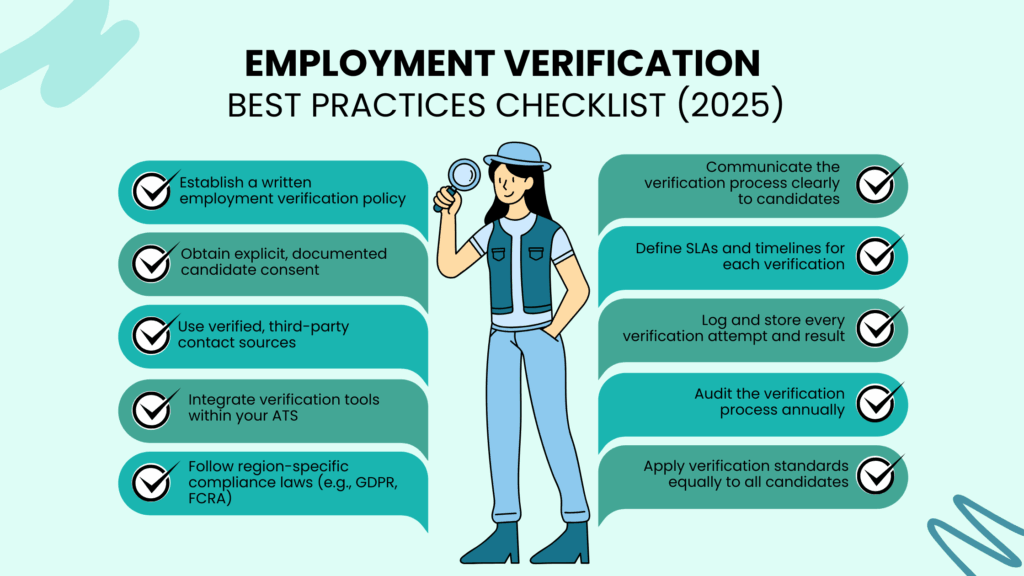
Mistakes HR Teams Should Avoid During Employment Verification
As verification procedures evolve in 2025, HR professionals must approach this stage with discipline and precision. Below are common mistakes to avoid during employment verification, along with corrective actions that support a more reliable and compliant hiring framework.
1. Conducting Verification Without Explicit Consent
Initiating employment checks without documented candidate consent is a critical mistake. In jurisdictions with strict data protection regulations, this practice can lead to penalties or reputational damage.
To ensure compliance, obtain formal, written consent early in the hiring process. Consent should clearly outline what will be verified, with whom, and for what purpose. Retain this documentation as part of the candidate’s record.
2. Using Unverified or Informal Contact Sources
Relying on contact information provided solely by the candidate, especially personal numbers or unverified references, can result in misleading or inaccurate verification. In some cases, this may lead to fabricated employment histories going undetected.
Instead, reach out to official company contacts such as the HR department or administrative office. When needed, use professional networks like LinkedIn to confirm employer information before initiating outreach.
3. Asking Non-Compliant or Irrelevant Questions
Employment verification should focus strictly on job-related facts. Questions related to compensation, reasons for leaving, or subjective evaluations introduce risk and may violate local employment laws. Additionally, any inquiry into personal attributes such as age, marital status, or health is inappropriate and potentially unlawful.
Maintain a focused inquiry limited to:
- Job title and function
- Dates of employment
- Reporting structure or department
- Nature of contract (e.g., full-time, part-time, project-based)
This ensures consistency and legal alignment across all verifications.
4. Bypassing Checks for Referred or Internal Candidates
When candidates are referred by current employees or senior leadership, HR teams sometimes reduce or skip the verification process entirely. This introduces inconsistency and potential bias into the hiring system.
Regardless of source, all candidates should undergo the same standardized verification steps. This upholds fairness, protects the organization, and reduces exposure to hiring errors based on assumptions or informal judgments.
5. Inadequate Documentation of the Verification Process
Failing to document who was contacted, when, and what was confirmed can become problematic, especially if questions arise after a candidate is hired. Verbal confirmations alone are insufficient and do not satisfy recordkeeping standards required by most compliance frameworks.
Maintain written records of each verification, including contact details, confirmation responses, and the method used (email, phone, platform). Organize and archive this data within the candidate’s file or ATS for future reference or audits.
Conclusion
Employment verification is a necessary part of every structured hiring process. In 2025, it requires more attention due to remote work, international hiring, and increasing compliance requirements.
A clear and consistent approach helps reduce errors, avoid legal issues, and maintain accountability across teams. The process should be documented, repeatable, and aligned with relevant laws in every location where hiring occurs.
If you’re looking to streamline verification and stay audit-ready, explore how WorkSure integrates seamlessly with your HR tech stack.
Related Articles
How Employment Verification Is Done: A Guide for HR Teams
What is Employment Verification and Why Does it Matters?
Frequently Asked Questions (FAQs)
What are the key components of a strong employment verification policy?
A solid policy should include:
- Types of employment information to verify (e.g., job title, dates)
- When to initiate verification in the hiring process
- Documentation and consent requirements
- Protocols for international and remote hires
- Retention periods and data storage standards
A written policy promotes consistency and compliance across your hiring teams.
2. Is candidate consent required for employment verification?
Yes, explicit written consent is a critical legal and ethical step in most regions. Failing to obtain it may violate data protection laws such as GDPR, CCPA, or FCRA. Consent should specify:
- What will be verified
- Who will receive the information
- How the data will be used and stored
Store this consent securely for auditing and legal defense.
3. How long should HR retain employment verification records?
In general, records should be retained for at least 2 to 3 years post-hire or as required by local labor laws. For companies in regulated industries, that period may be longer. Use secure, encrypted storage and restrict access to authorized personnel only.
4. What tools can help streamline employment verification?
Digital verification tools integrated into your ATS or HRMS can:
- Automate employer outreach
- Log verification activity
- Ensure data privacy compliance
- Reduce turnaround time from days to hours
Examples include WorkSure, First Advantage, and Checkr, depending on your region and hiring volume.
5. How often should you audit your employment verification process?
Annual audits are recommended to:
- Identify outdated practices
- Check compliance with evolving laws
- Review third-party vendor performance
- Improve response times and documentation quality
Assign a compliance officer or HR lead to own this review and ensure your process stays defensible. Still have questions about employment verification workflows? Contact us to learn how to automate your process with WorkSure.
